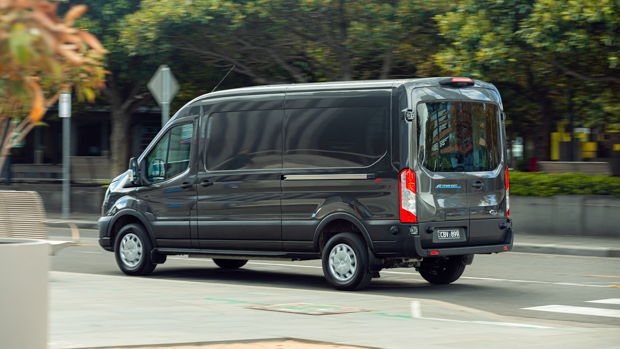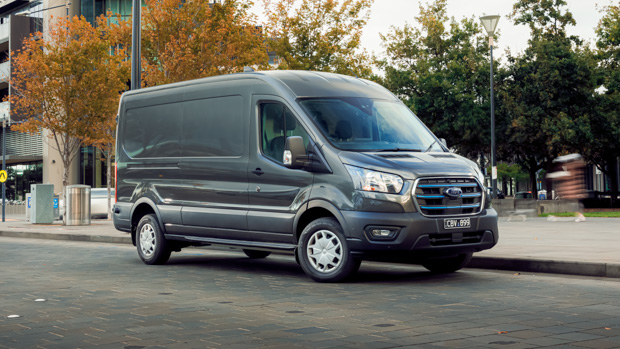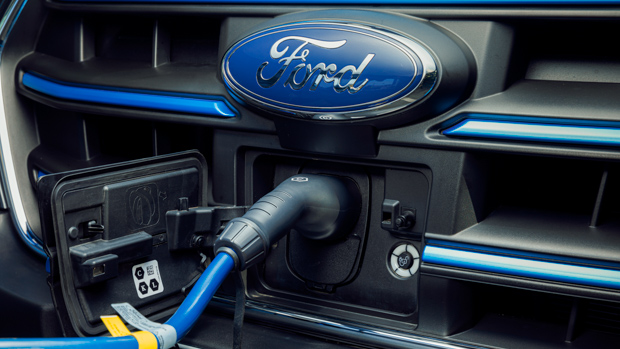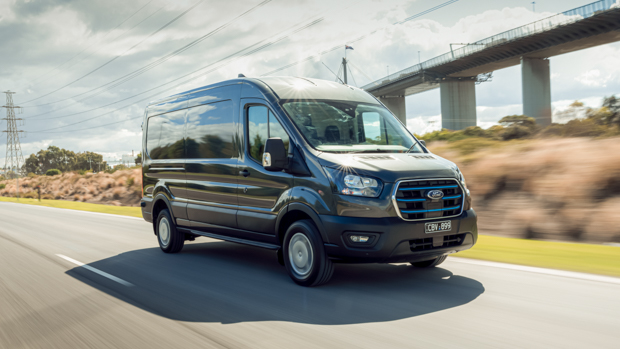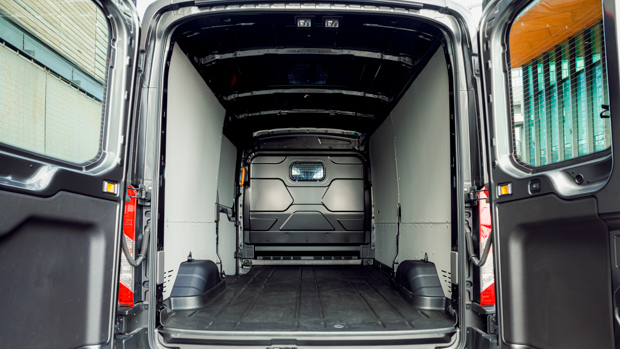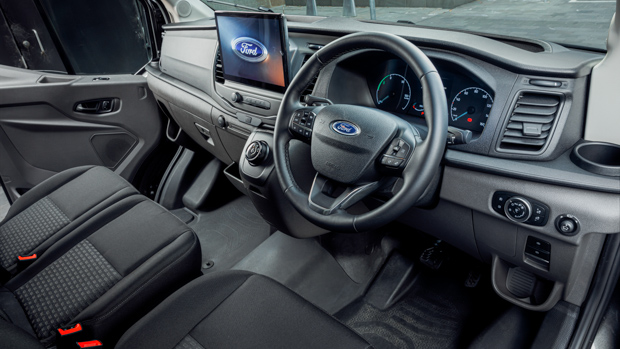-
Car Reviews
- Car News
-
Car Comparisons
Latest comparisons
- Chasing Deals
The E-Transit is powered by a 68kWh battery that allows it to drive up to 307km on a single charge
Ford Australia has announced pricing for its all-electric E-Transit full-size van, which is available to purchase now.
Priced from $104,990 before on-road costs, the E-Transit will be landing in two guises locally, with the high-roof variant coming at a $1500 premium over the standard model.
Ford notes that the E-Transit can only be purchased through an authorised Ford EV dealer, of which there will be 72 locations across 62 dealership groups.
In Australia, the electric van market is still quite a niche one, but it’s likely that the E-Transit will be facing competition from the likes of the LDV eDeliver 9, as well as the smaller Volkswagen ID Buzz Cargo and Mercedes-Benz eVito midsize vans.
At $104,990 before on-road costs, it’s not hard to see that Ford Australia is charging a significant premium for the E-Transit over the equivalent diesel-powered Transit.
Buyers will be shelling out an extra $47,000 for the electric van, when the comparable Transit 350L, which is powered by a 2.0-litre turbo-diesel engine, costs $57,990 before on-road costs.
Though this premium will be a difficult pill to swallow in the face of traditional ICE power, it’s worth noting that Ford has managed to undercut the LDV eDeliver 9, which starts at $116,537.
Despite landing in two body styles, both grades of E-Transit will be powered by a single motor on the rear axle that draws power from a 68kWh (usable) battery that’s shared with the Mustang Mach-E.
The electric motor produces 198kW and 430Nm, which will power the rear wheels exclusively.
WLTP-rated range figures for each E-Transit vary, presumably due to weight and aero efficiency. The regular van is rated between 230km to 307km, whilst the high roof model is slightly down, rated to between 222km and 295km of driving range.
However, it remains to be seen how drastically payload weight will affect these numbers.
The E-Transit can be charged at up to 115kW with the DC fast charger, meaning charging from 15 to 80 percent will take a claimed 34 minutes.
Users can also plug into a three-phase 11kW AC charger, which can be fitted to a home or depot, that will see the battery charged from flat to full in 8.2 hours.
Alongside providing a more pleasant ride for passengers, Ford reportedly decided to use coil springs at the rear of the Transit to maximise its carrying capacity.
Both variants get a GWM rating of 4250kg, and the maximum payload sits at 1611kg for the standard model, and 1566kg for the high-roof van.
This lack of payload parity is down to the kerb weights as the standard E-Transit tips the scales at 2639kg, whilst the high-roof model weighs 2684kg.
In terms of loading space, the standard model gets 11㎥ whilst the additional space in the high-roof model pushes this figure to 12.4㎥ .
In terms of options, buyers can opt for prestige paint at $700 or Special Vehicles Operation-themed paint options at $1400, as well as a single front passenger seat for $150 and dual side-loading doors for an extra $1000.
On the inside, the E-Transit gets a 12.0-inch infotainment screen that gets satellite navigation, as well as supporting wireless Apple Carplay and Android Auto.
As for safety, Ford’s entire active suite comes standard with the E-Transit, which includes AEB, adaptive cruise control, blind spot monitoring, lane keep assist, and traffic sign recognition among other systems.
Ford Transit 2023: prices in Australia
All prices listed are before on-road costs.
Latest news
About Chasing cars
Chasing Cars reviews are 100% independent.
Because we are powered by Budget Direct Insurance, we don’t receive advertising or sales revenue from car manufacturers.
We’re truly independent – giving you Australia’s best car reviews.
